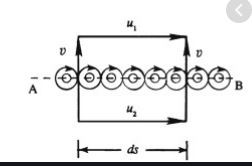ION TRANSPORT MEMBRANE
TECHNOLOGY(ITM)
Ion
transport membrane (ITM) technology is a key perspective for efficient oxygen
separation. At the present time, semi-industrial modules based on ceramic ITMs
produce oxygen of 98.9%–99.9% purity. In order to improve the oxygen purity,
using newly developed liquid-oxide ITMs along with the highest oxygen
selectivity, these membranes exhibit competitive oxygen permeability and could
be successfully used for ultrahigh purity oxygen separation. Oxygen is the
second-largest volume industrial gas that has numerous applications in aerospace,
metallurgy, power engineering, environmental, medicine, etc. Ultrahigh purity
oxygen (>99.999% purity) is in demand in the solar, semiconductor, chemical,
and pharmaceutical industries. Recently, renewable sources of energy (sun,
wind, biomass, etc.) are rapidly gaining in popularity. Clean energy,
especially photovoltaics (PV), is a field of major growth and investments.
Oxygen is one of the
ultrahigh-purity process gases needed by the PV cell manufacturing. At the
present time, ultrahigh purity oxygen is produced by water electrolysis or
distillation method. However, these method-based oxygen production technologies
are energy-intensive. In recent decades, energy-efficient ion transport
membrane (ITM) technology is developing to produce pure oxygen. Conventional
ITMs are the ceramic membranes with high oxygen ion conduction at elevated
temperatures. There are two ITM processes. In the first, a mixed ionic
electronic conducting (MIEC) membrane operates with a difference of the oxygen
partial pressures, as illustrated in Fig. 1a. Under the oxygen electrochemical
potential gradient, ambipolar conductivity of ions and electrons provides a
sufficient oxygen permeation flux through the MIEC membrane. The MIEC
membrane-based separation process is referred to as ITM oxygen. In the second
process, an ion-conducting membrane (or an electrolyte) operates with a
voltage.
In contrast to the first process, electron transfer occurs in
the outer circuit, as illustrated in Fig. 1b. Devices utilizing electrolytes
are referred to as oxygen generators. The envisioned ITM applications vary from
the generation of pure oxygen and partial oxidation of methane (membrane
reactors for syngas production) to the capture of CO2 in oxy-fuel power plants.
Oxygen permeation flux through MIEC membrane is limited by diffusion.
Therefore, the minimization of membrane thickness is necessary to achieve a
high oxygen permeation flux. However, the brittle thin-film ceramic membrane
material has a very low mechanical strength. As a rule, a thin membrane film is
deposited on a porous support (it is so-called asymmetric membrane). To provide
the thermochemical compatibility between membrane and support, they are usually
made of the same material. The surface exchange reaction rates can limit the
oxygen permeation flux through a thin MIEC membrane. An appropriate catalyst is
deposited on the membrane to increase the rate of surface exchange reactions.
Gas transport in a porous support can also control the oxygen permeation flux
through asymmetric membranes. In order to ensure the sustainable production of
oxygen, numerous asymmetric membranes with high oxygen permeability have been
developed. Currently, asymmetric membrane-based semi-industrial modules produce
oxygen of 98.9%–99.9% purity.

The rare earth stabilized bismuth oxide and rare-earth doped
ceria are usually used as the oxygen generator electrolytes. To achieve a
sufficient ionic conductivity of these electrolytes, oxygen generators operate
in the temperature range of 700 °C–800 °C. The purity of oxygen produced by the
ceramic electrolyte depends on the electrolyte density. At the present time,
the product grades of 98%–99.99% oxygen are available.










